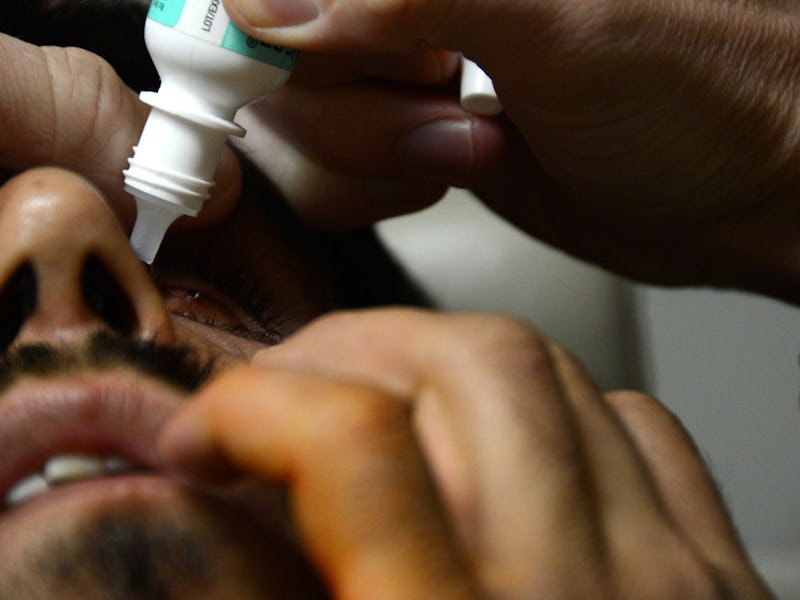How Eyedrops Were Used as Poison in South Carolina Murder Case
Over three days, the drops became dangerous.

A woman in South Carolina has plead guilty to killing her husband with an unconventional murder weapon. For three days, Lana Clayton spiked her husband’s drinks with eyedrops, slowly but surely hijacking his sympathetic nervous system to achieve her awful goal.
In the initial report, Associated Press reported that 64-year-old Stephen Clayton was found dead in his home in Clover, South Carolina. But it wasn’t until an autopsy was performed that the case took an unexpected turn. Investigators found an abnormally high amount of tetryzoline in Clayton’s body — a chemical compound that’s common in eyedrops like Visine. If enough of the chemical is ingested, the effects can be fatal.
Lana Clayton admitted to poisoning her husband with eyedrops
This isn’t the first time a person has been intentionally poisoned with tetrahydrozoline. For instance, in 2013, a man in Alta Sierra, California repeatedly spiked his girlfriend’s coffee with the compound until she discovered his murder plot by reading his texts. Deaths from tetrahydrozoline poisoning, fortunately, are extremely rare. In its annual report for 2016, the American Association of Poison Control Centers noted 859 case mentions of tetrahydrozoline poisoning from “opthalamic preparations” (read: eyedrops) alone. Of those, 730 of were unintentional and not a single case resulted in death.
When eye drop poisoning does result in a death, it’s because tetrahydrozaline acts as a “sympathomimetic”, meaning that it can mimic the effects of the body’s own sympathetic nervous system. The sympathetic nervous system controls the body’s unconscious actions, like changes in blood pressure or heart rate, by engaging alpha receptors. These receptors, found on muscle cells, are usually activated by the hormone epinephrine (also known as adrenaline), which is naturally produced by the body. Most of the time, when alpha receptors are activated, they tell the arteries to constrict, tightening up blood vessels and quickening blood flow to the heart.
Tetrahydrozaline mimics epinephrine, so it can also activate certain types of alpha receptors. This is the theory behind eyedrops like Visine: if you apply tetrahydrozaline locally by dropping it into your eye, it binds to peripheral alpha one receptors like adrenaline, increasing blood flow and clearing away redness. But when it’s ingested, the effects are very different — and very dangerous.
Some reports show that patients who ingest tetrahydrozaline have severe drops in blood pressure and heart rate, which may seem counterintuitive, considering eye drops are meant to constrict blood vessels, which would usually cause those metrics to rise. One case report, published in the Journal of Emergency Medicine in 1995, however, suggests that when tetrahydrozaline is ingested it activates a different type of central nervous system dilator that causes blood vessels to dilate and blood pressure to drop. A 2007 case report in Clinical Toxicology describes the result of this activation in another patient that drank some eye-drop solution. She exhibited “hypotensive activity” — low blood pressure — and other cardiovascular effects for 36 hours after her initial mishap.
That patient recovered just fine, but a few more doses over the next few days could have proved dangerous, which Lana Clayton used to her advantage as she slowly used chemicals to bend her husband’s sympathetic nervous system to her own will. It’s an approach to poisoning that, at least from a physiological standpoint, takes serious commitment and premeditation. Now that she’s plead guilty, she’ll likely pay a high price for her crime.